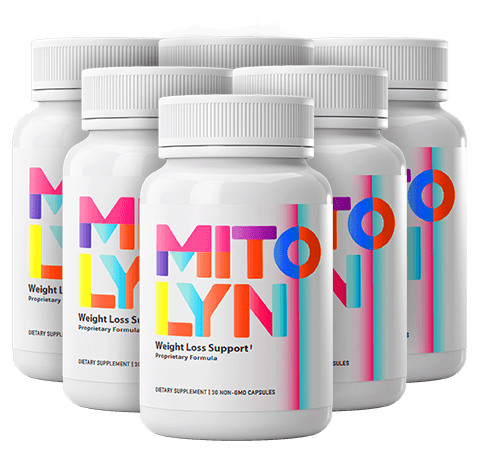
Ever thought the usual weight loss tips might not work for you? Many people doubt the idea of eating less to lose weight. Reverse dieting, which lets you eat more to lose weight, is getting more attention. It’s based on how your body adapts to food, which is key to understanding it.
By learning about reverse dieting, you can see how eating more can help you lose weight. It also improves your health.
Exploring reverse dieting shows it’s not just about eating more calories. It’s about knowing what your body needs and how it reacts to food. The idea of eating more to lose weight might seem odd, but science supports it. Learning about reverse dieting helps you make smart choices for your weight loss journey.
Understanding Reverse Dieting: Breaking the Traditional Weight Loss Rules
When dieting, you’re usually told to eat less and move more. But reverse dieting does the opposite. It means eating more to boost your metabolism and help you lose weight. To start reverse dieting, you need to know about metabolic adaptation.
Metabolic adaptation happens when your body slows down after eating less. This is why reverse dieting is not just about eating more. It’s about eating the right foods to meet your body’s needs. This approach focuses on nutrient-rich foods to keep you healthy.
Starting reverse dieting requires understanding the psychology behind it. Many fear eating more will make them gain weight. But, with the right mindset, reverse dieting can help you lose weight. Focus on eating nutrient-dense foods and make small diet changes.
Some think reverse dieting is a quick fix for weight loss. But it’s a long-term strategy that needs patience and dedication. Learning about reverse dieting helps you make better diet choices and develop a healthier relationship with food.
The Scientific Foundation of Metabolic Adaptation
Trying to lose weight? Knowing how your metabolism works is key. Your body’s metabolic adaptation is vital for weight loss. It changes with your diet and exercise.
If you’ve hurt your metabolism with strict diets, you might wonder how to speed it up. You want to increase metabolism and fix metabolism to reach your weight loss goals.
Your body always adapts to its surroundings. Cutting calories slows your metabolism to save energy. But eating more can fix metabolism and raise your metabolic rate, helping you lose weight.
Here are some tips to increase metabolism:
- Eat enough protein for muscle growth and repair.
- Add strength training to your workouts.
- Ensure you get enough sleep to regulate your metabolism.
Understanding metabolic adaptation
Losing weight is more than just cutting calories. It’s about caring for your body’s metabolism and overall health. Focus on lasting, healthy changes for a better you.
Can You Really Eat More to Lose Weight? The Research Says Yes
Weight loss often means eating less. But research on reverse dieting shows eating more can help you lose fat and improve nutrition. Layne Norton, a well-known expert, has done studies proving reverse dieting works for weight loss.
Studies Supporting Reverse Dieting
Many studies back up reverse dieting’s benefits. They show it can increase your metabolism and help you lose fat. By trying reverse dieting, you can see these results for yourself.
The Role of Calories in Metabolic Recovery
Calories are key in reverse dieting. Eating more calories makes your metabolism go up. This leads to losing fat and better health.
How Your Body Responds to Increased Food Intake
When you eat more, your body gets better at burning calories. This boosts your metabolism and improves your nutrition. It helps you lose fat and get healthier, making reverse dieting a good choice for weight loss.
Creating Your Reverse Dieting Strategy
To start reverse dieting for fat loss, you need to know how to calculate your macros and plan meals. This means tracking your daily food and adjusting your diet to meet your nutritional needs. When learning how to reverse diet, it’s key to focus on a full day of eating. You should also monitor what you eat in a day to make smart diet choices.
A big part of reverse dieting is understanding your macros and how they affect your weight loss. By tracking your macros and adjusting your diet, you can get better results and reach your weight loss goals. Many people have successfully used reverse dieting for fat loss. They share their experiences and insights into what i eat in a day.

- Start by tracking your daily food intake to understand your eating habits
- Calculate your macros and adjust your diet accordingly
- Focus on nutrient-dense foods and avoid processed snacks
- Stay hydrated and listen to your body’s nutritional needs
By following these tips and understanding how to reverse diet, you can make a plan that fits your needs. It will help you reach your weight loss goals. Remember to stay consistent, track your progress, and make changes as needed for a successful reverse dieting journey.
Calculating and Adjusting Your Macros for Success
To succeed with reverse dieting, knowing how to calculate and adjust your macros is key. Macros are the three main nutrients: protein, carbs, and fat. When you follow an iifym (if it fits your macros) diet, make sure you hit your daily macro goals.
Studies show that finding the right macro balance is important for weight loss. Use online tools to figure out your daily macros. These tools consider your age, weight, height, and how active you are. For example, a good protein rule is 1.6-2.2 grams per kilogram of body weight.
Protein Requirements During Reverse Dieting
Protein is vital for muscle building and repair. Eat lots of protein-rich foods like lean meats, fish, eggs, and dairy. You might also want to add protein powder to your diet.
Carbohydrate and Fat Distribution
Carbs and fats give you energy. It’s important to find a balance that suits you. Eat whole foods like fruits, veggies, whole grains, and healthy fats like nuts and seeds. Aim for 45-65% of your calories to come from carbs and 20-35% from fats.
Weekly Adjustment Guidelines
To get the best from reverse dieting, watch your progress and tweak as needed. Take photos, measure yourself, and track your weight each week. If you’re not seeing results, think about changing your macros or calorie intake. Remember, reverse dieting is about eating right, not just cutting calories.
By following these tips and understanding how to adjust your macros, you’ll do great with reverse dieting. Stay consistent, patient, and kind to your body as you go.
Common Challenges and How to Overcome Them
When you start reverse dieting, you might face some hurdles. It’s key to know when to stop to avoid metabolic damage. A slow metabolism can slow you down, but you can beat it with the right plan. Reverse dieting is about eating more to get your metabolism going.
Challenges like plateaus, hunger, and a slow metabolism can pop up. Here are some tips to beat them:
- Eat more protein to build and fix muscle
- Play with your macronutrient ratios to find your sweet spot
- Do strength training to build muscle and speed up your metabolism

It’s vital to listen to your body and tweak your plan as needed. If you hit a plateau, check your calorie intake and tweak it. Remember, reverse dieting is tailored to you. By tackling common challenges, you can keep moving forward and reach your weight loss goals.
| Challenge | Solution |
|---|---|
| Plateau | Reassess calorie intake and adjust as needed |
| Increased Hunger | Increase protein intake and adjust macronutrient ratios |
| Metabolic Slowdown | Incorporate strength training exercises and adjust calorie intake |
Monitoring Progress and Making Adjustments
Starting your reverse dieting journey means keeping an eye on your progress. You’ll need to track your nutrition and fat loss. Use tools like mobile apps or spreadsheets to log your food and weight changes.
Listening to mind pump radio podcasts can offer great tips. They help you understand how to reverse diet right. Knowing how reverse dieting for fat loss works will guide your diet choices.
Important things to watch include:
- Daily calorie intake
- Macronutrient balance
- Weight loss progress
- Body fat percentage
Tracking these and adjusting your dieting plan can improve your results. Stay consistent and patient. Reverse dieting takes time and effort.
Conclusion: Transforming Your Relationship with Food and Weight Loss
Reverse dieting is a powerful way to break free from restrictive dieting. It helps you achieve sustainable weight loss by eating more. This way, you can reset your metabolism and take back control over food.
The science behind reverse dieting shows your body adapts and thrives with the right nutrition. By can you really eat more to lose weight, you’re not just losing pounds. You’re also nourishing your body and mind, leading to a healthier life.
Starting your weight loss journey? Be patient, listen to your body, and trust the process. Reverse dieting might need some adjustments, but with the right strategy and mindset, you can change how you see food. And achieve your goals.












